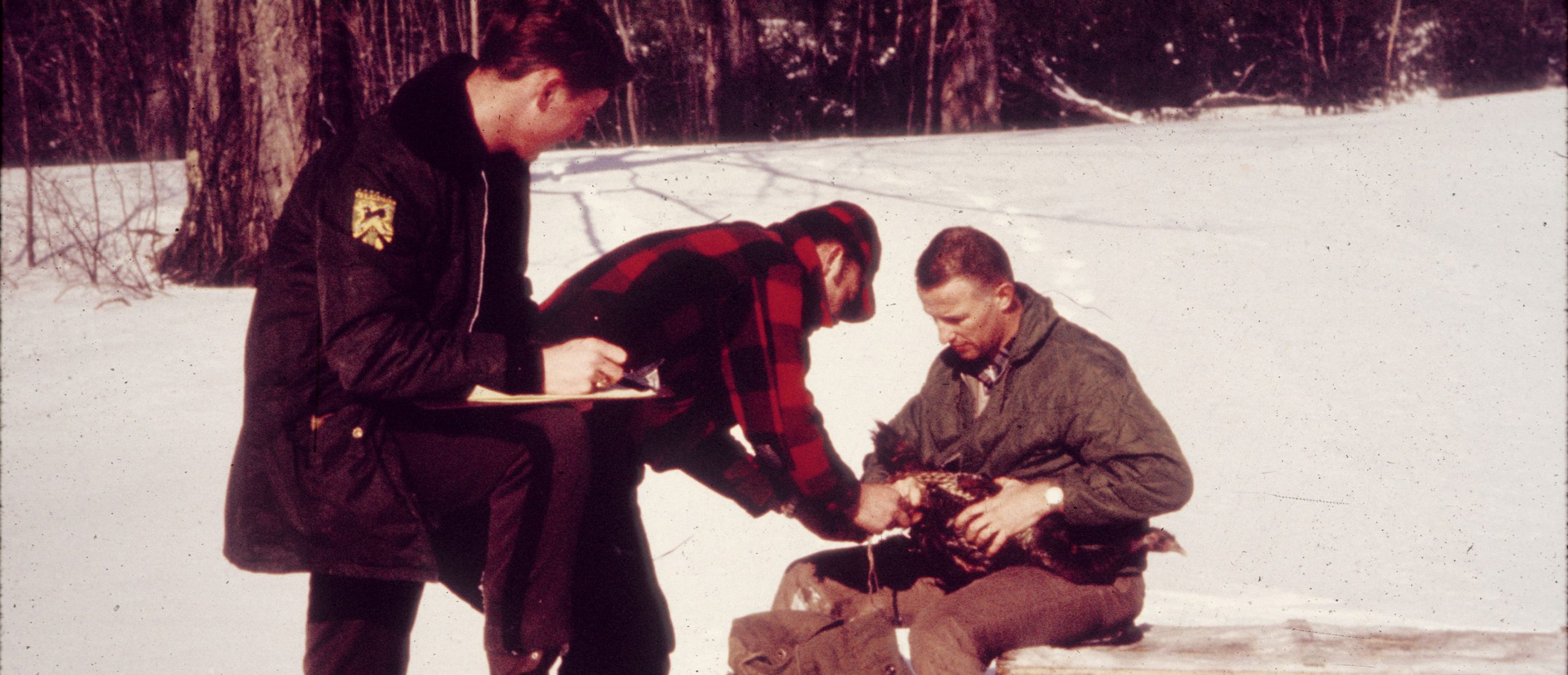From Humble Beginnings
Vermont and NWTF celebrate 50 years of conservation.
When turkey hunting in New England today, it’s hard to imagine a landscape once devoid of wild turkeys. But it’s true; the wild turkey was extirpated entirely from the region, mainly due to rapid deforestation for agriculture in the mid-1800s. At the peak of deforestation across the six states, from about 1830 to 1880, it is estimated that up to 80% of the landscape was cleared. With significant deforestation and unregulated hunting, it’s no wonder wild turkeys disappeared. However, like many regions, New England’s wild turkey restoration was an incredible success, now possessing some of the best turkey habitat and hunting in the entire country.
While the NWTF celebrates 50 years of mission delivery, the Vermont Fish and Wildlife Department is celebrating its 50th year of wild turkey hunting. The coinciding anniversaries shed light on how far the wild turkey has come – both across the nation and in Vermont – in just 50 years. It also underscores the productive partnership the NWTF and the department have forged over the decades to ensure wild turkeys continue to thrive while also introducing new hunters to the spring season and conservation.
Vermont was not unlike the rest of New England: wild turkeys originally were found in the southern two-thirds of Vermont, until the mid-1800s when Vermont’s forested area was reduced to an estimated 25%, ultimately eliminating the wild turkey from the landscape.
In 1968, Vermont’s wild turkey restoration program started when the VFWD determined that forests across the state had bounced back enough to support wild turkeys again. But with no turkeys, the department had to start from scratch.
(The Wild Turkey in Vermont: A film made decades ago chronicling the restoration of the wild turkey in the Green Mountain State. The film includes captivating vintage 16mm film footage that highlights the first wild turkey releases in the state in 1969.)
John Hall, a VFWD information specialist at the time, helped release the first translocated birds from southwestern New York in 1969. Fifty-four years later, Hall still works for the department in a part-time role and reflects nostalgically on his diary entries that chronicle working with Bill Drake, VFWD’s first wild turkey biologist, and the first few translocation efforts in the state.
“Feb. 28, 1969, Bill met me in West Pawlet [southwestern Vermont] with two gobblers that he had canon-netted the day before, so those were the first two birds we released that afternoon around 2 o’clock,” he said. “And then on March 4, I went back down there again and met Bill, and we put out five turkey hens in the same location.”
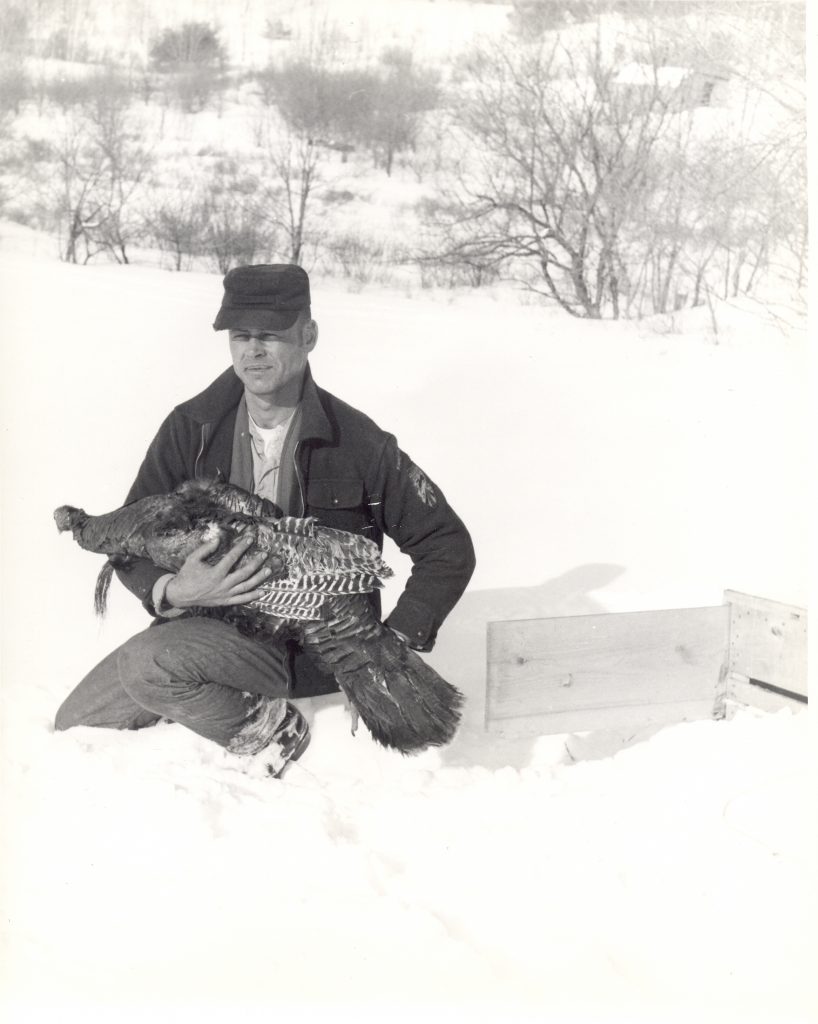
Drake continued the translocation efforts from 1969 to 1970, totaling 31 wild turkeys released throughout southwestern Vermont.
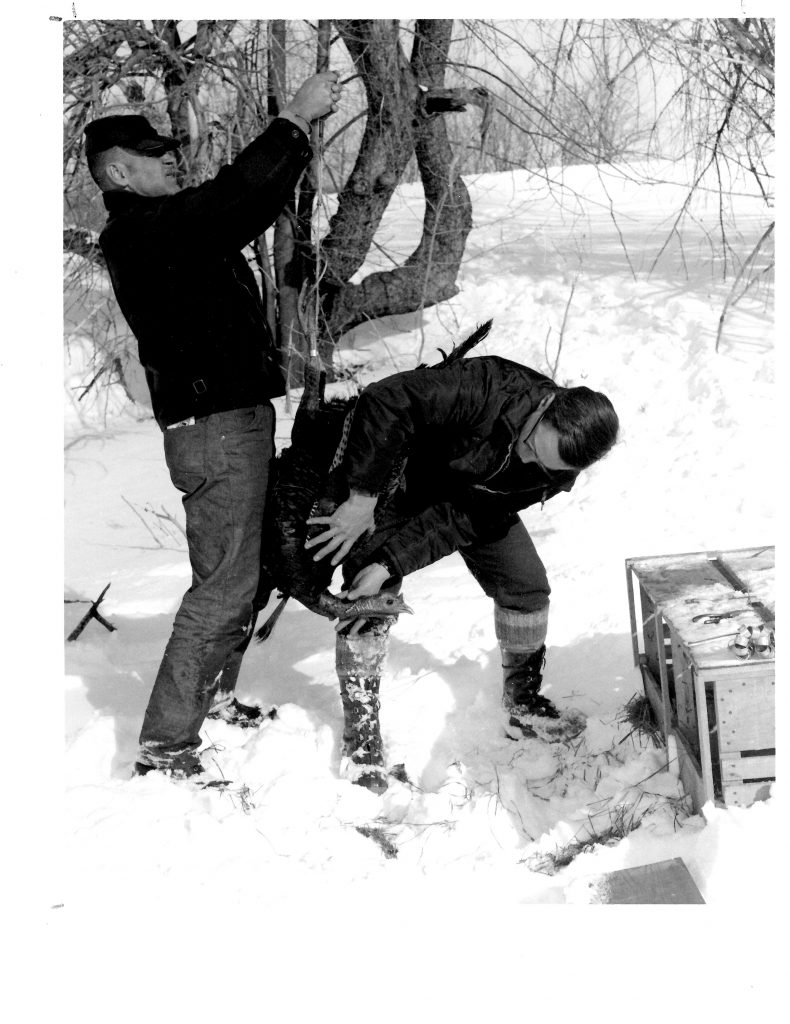
“Those birds did extremely well,” Hall said. “They reproduced more quickly and more successfully than we imagined.”
With their own flourishing population to work with, the VFWD began to relocate birds from the newly established population to all suitable habitat throughout the state.
“We continued moving the birds eastward and northward for several years until the birds became established throughout the entire state, which is actually further north than what they were thought to have occupied [pre-European settlement],” Hall said. “They far exceeded our imagination in their ability to reproduce and survive in Vermont winters.”
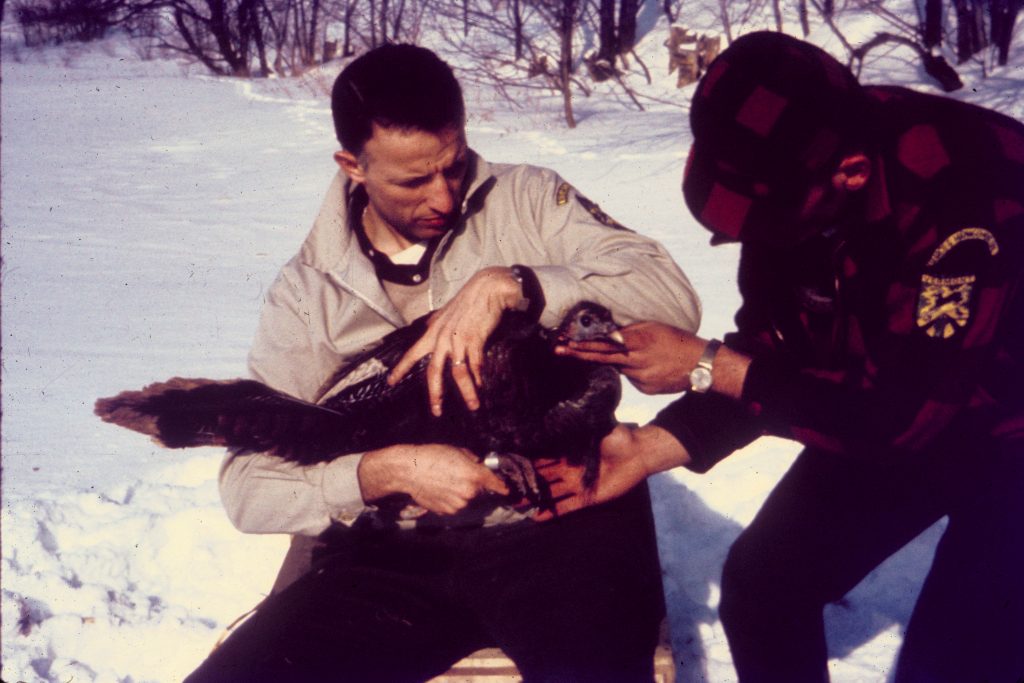
In just four years after those first two gobblers were released, the VFWD opened its first turkey season in 1973. The department allocated 579 permits for three southwestern management zones. 23 hunters succeeded in harvesting a bird during the 12-day season. The gobblers harvested were healthy and averaged 18.8 pounds, with the heaviest weighing 24 pounds. Vermont’s turkey population continued to expand throughout the entire state over the decades and is now estimated at 45,000 birds. Turkey hunting is allowed statewide from May 1 to May 31.
And while wild turkey restoration efforts were proving incredibly successful in Vermont in the early ’70s, many states across the country were still in their early head-scratching phase of wild turkey restoration. A month or so before Vermont’s first turkey season in 1973, about 500 miles from where those first two gobblers were released, Tom Rodgers founded the NWTF in Fredericksburg, Virginia, as a research and conservation education organization with the dual mission to conserve the wild turkey and preserve North America’s hunting heritage. The NWTF would become the leading organization to bolster state agencies’ efforts to restore their wild turkey populations, ultimately leading to huntable wild turkeys in 49 states and wild turkeys exceeding their pre-European range.
Today, the NWTF and the VFWD are continuing both of their five-decade turkey conservation legacies through a partnership that works to improve turkey habitat, increase access to public hunting and introduces Vermonters to turkey hunting.
“We have an awesome partnership with the VFWD that emphasizes the NWTF’s mission to conserve wild turkeys and preserve North America’s hunting heritage,” said Matt DiBona, NWTF New England district biologist. “We have completed many conservation projects on VFWD WMAs and in the Green Mountain National Forest that have enhanced hundreds of acres of wild turkey habitat.”
In addition to conservation projects – including tree plantings, creating forest openings, riparian restoration work and forest management – the NWTF and the VFWD co-host numerous outreach events every year, such as wild game cooking seminars and learn-to-hunt seminars.
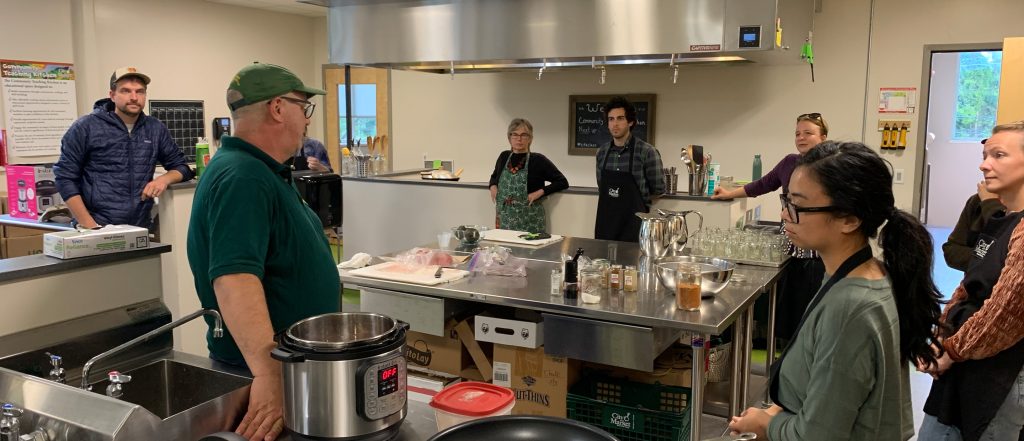
“There is great synergy between our passionate volunteers and our partnership with the department that allows the NWTF to have a strong presence in Vermont,” DiBona said. “It shows that we can make big things happen even in a small state.”
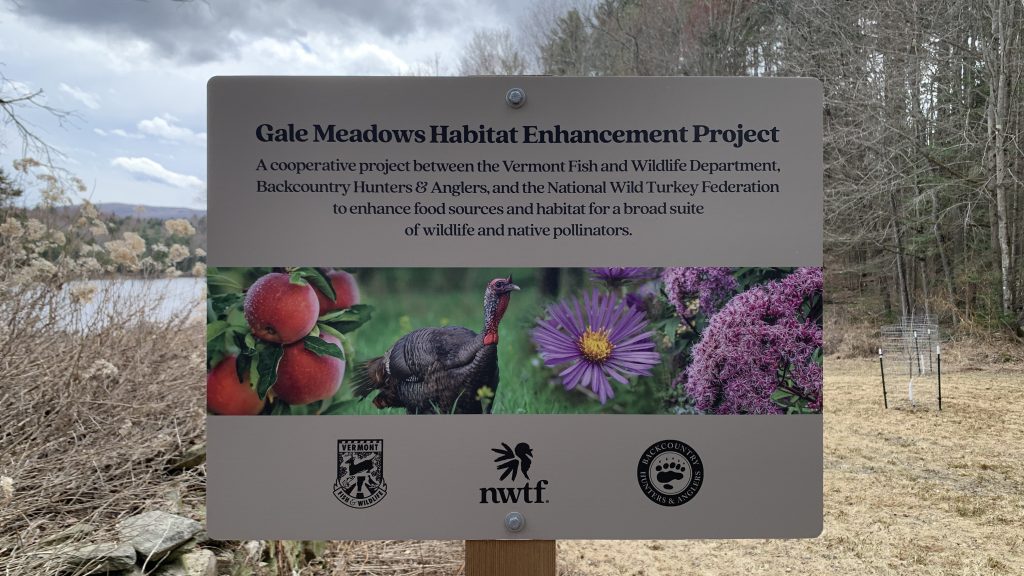
To think, this great work happening today is the extension of 31 birds being translocated from New York more than 50 years ago.
In the same vein, what started as an idea in the mind of a passionate turkey hunter 50 years ago in Virginia has led to conserving over 22 million acres of wildlife habitat, allocating $8.5 million to critical wild turkey research, recruiting over 1.5 million new hunters and opening countless acres of public hunting access.
It underscores what can come from humble beginnings. Whether you’re a small New England state or national organization, all it takes is an idea followed by action. And while we celebrate 50 years of turkey hunting in Vermont and 50 years of the NWTF, if we continue the same resolve as those early Vermont conservationists and Rodgers 50 years ago, we will celebrate our coinciding centennial anniversary in another 50 years.
